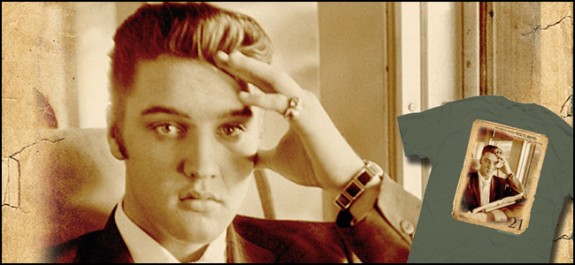PHOTOGRAPHERS. ARTISTS. Last month, I researched and wrote an article about the 100-year history of the T-shirt business. So when I visited a local art fair (Summerfair), I couldn’t help but notice the many different types and styles of T-shirts people were wearing.
At the entrance to the fair, Summerfair organizers sold T-shirts with the same vibrant artwork as the poster for the 2013 event. The T-shirts were very reasonably priced, suggesting that fair organizers understand that the selling more T-shirts gives them more opportunities for year-round exposure for the event and the implied endorsements of the T-shirt wearers.
But I also noticed that an exhibitor who was selling fine-art photography was also selling T-shirts featuring his vintage-style photography alongside his notecards and matted prints.
What a great idea! People don’t send nearly as many handwritten note as we should. But people of all ages wear T-shirts–to show where we’ve been and what we like. And if people wear T-shirts that promote their favorite musicians, why shouldn’t they wear T-shirts bearing the images of photographers and artists whose work they admire? Imagine how cool it would be to see people walking around wearing your art or studio logo.
 According to a 2012 Global Advertising Speicalties Impressions study by the Advertising Specialty Institute, 43 percent of all consumers in the U.S. own at least one promotional shirt. Promotional shirts are particularly popular among younger people: 49 percent of people ages 21-36 own at least one promotional T-shirt and 46 percent of consumers in the 35 to 44 age group own a promotional T-shirt.
According to a 2012 Global Advertising Speicalties Impressions study by the Advertising Specialty Institute, 43 percent of all consumers in the U.S. own at least one promotional shirt. Promotional shirts are particularly popular among younger people: 49 percent of people ages 21-36 own at least one promotional T-shirt and 46 percent of consumers in the 35 to 44 age group own a promotional T-shirt.
The ASI report notes T-shirts and other advertising specialties are unique forms of marketing. They point out, “Unlike other forms of media, where the advertiser’s message is seen as an interruption, ad specialties are used by consumers…And because the products are kept and use repeatedly, the advertisers are remembered.”
The study estimated that on average, consumers in the U.S. will keep a free, promotional T-shirt for 5.7 months and wear it often enough to achieve 1,990 impressions for the advertising company.
 My hunch is that anyone who buys a T-shirt directly from an artist they admire is likely to keep it longer and wear it more often–achieving even more exposure for the photographer or artist.
My hunch is that anyone who buys a T-shirt directly from an artist they admire is likely to keep it longer and wear it more often–achieving even more exposure for the photographer or artist.
A new breed of direct-to-garment and sublimation printing technologies is making it more feasible to reproduce certain types of photographic artwork on short runs of T-shirts. Direct-to-garment printers don’t require the screen set-up costs involved with conventional screen printing. Companies that offer short runs of digitally printed shirts include: Jakprints, Spreadshirt, and Blue Cotton.
Skilled screen printers can also print gorgeous photo reproductions on T-shirts. For example, check out the Elvis photo reproductions on “The Wertheimer Signature Collection” of apparel. The T-shirts feature a few of the 2,500 images of Elvis that photojournalist Alfred Wertheimer shot between 1956 and 1958 when the singer was just beginning his career. The images on the T-shirt are included in a Smithsonian Institution traveling exhibition entitled: “Elvis at 21: Photographs by Alfred Wertheimer.” The T-shirts were screen-printed by Campus Collection in Tuscaloosa, Alabama and are available to wholesale retail distribution.
Bottom line: If you haven’t yet considered using T-shirts as a way to get your work seen, maybe it’s time to give it a try.
LINKS
Global Advertising Specialties Impressions Studies, v. 3: Advertising Specialties Institute
Exhibition: Elvis at 21: Photographs by Alfred Wertheimer
T-Shirts: The Wertheimer Signature Collection
Spreadshirt: Design Your Own T-Shirt
Blue Cotton: Design Your Own Shirt









